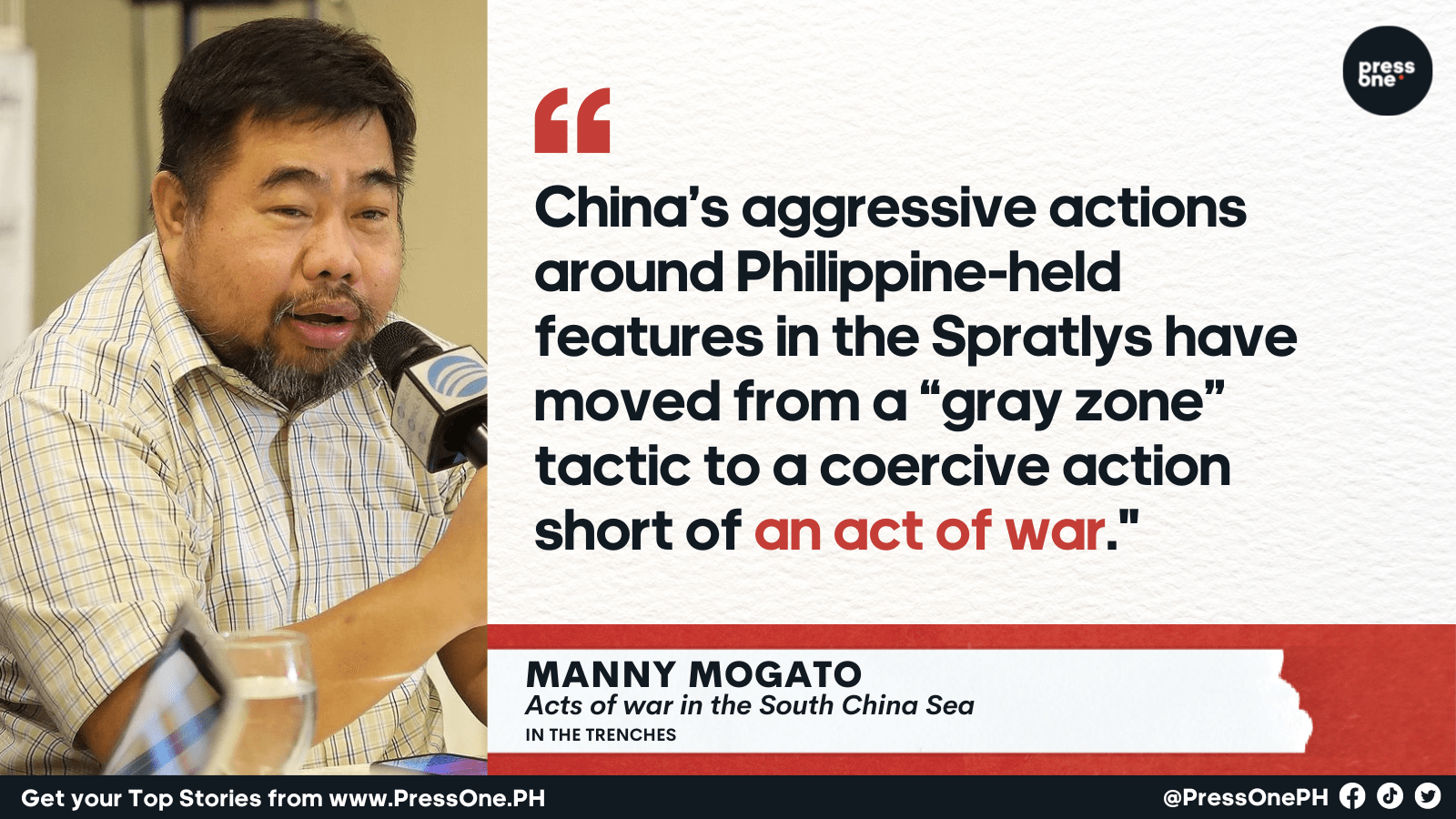Last week, the Philippine Coast Guard (PCG) reported the presence of more than 40 Chinese militia vessels swarming around Pagasa Island, the largest of nine features occupied by the Philippines in the South China Sea.
The Chinese militia vessels were not doing any fishing activities but were just anchored in the area. Some of these ships were within the Philippines’s 12 nautical mile territorial waters under the 1982 United Nations Convention on the Law of Sea (UNCLOS).
The presence of the Chinese ships, which included a People’s Liberation Army-Navy vessel and two Chinese Coast Guard vessels, have been clearly violating not only the country’s sovereign waters, or exclusive economic zone but its very sovereignty.
The presence of a large number of Chinese state-owned vessels posed a serious threat to the Philippines’s national security, increasing the risk of accidents that could lead to a potential conflict.
China’s aggressive actions around Philippine-held features in the Spratlys have moved from a “gray zone” tactic to a coercive action short of an act of war.
What is the real intention of China in deploying a large number of vessels around Pagasa Island, the seat of Kalayaan municipality in Palawan province?
Does China want to pressure the Philippines to stop its activities to upgrade military structures, including an airfield, on the island? Does it want to prevent the delivery of construction supplies, food, fuel, and other supplies to troops and civilians staying on the island?
A former navy flag navy chief described the Chinese activities around Thitu Island or Pagasa Island as a provocative action, calling it a “barrier operation.”
The presence of a large number of Chinese vessels around Thitu Island or Pagasa Island would make it difficult for a Philippine vessel to bring supply and fresh troops to an occupied feature.
In a way, China wanted to prevent the Philippines from repairing and upgrading military structures and from building new facilities to bolster its claims on the South China Sea.
In another part of the disputed waters, Chinese vessels were also swarming around Second Thomas Shoal or Ayungin Shoal where a decrepit naval transport vessel had run aground more than two decades ago.
A handful of Marines and Naval Special Warfare Group (SWAG) has been stationed on BRP Sierra Madre, serving as a monitoring post to Chinese movements and activities in the area.
BRP Sierra Madre was deliberately brought to the shallow waters inside Ayungin Shoal in response to the Chinese takeover of Mischief Reef in 1995.
The BRP Sierra Madre serves as a constant reminder to China that the Philippines will no longer allow China’s encroachment into its 200-nautical-mile exclusive economic zone and closer to its mainland on Palawan Island.
China’s latest swarming tactic, on the other hand, was designed to prevent the Philippines from sending another old transport ship to replace BRP Sierra Madre.
China has been waiting for BRP Sierra Madre to collapse anytime. It plans to replace Sierra Madre with its own vessels. But, instead of a stationary vessel, China plans to send round-the-clock patrol in the area to gain control of the disputed shoal.

The tactic would be similar to what it has been doing in Scarborough Shoal in another part of the South China Sea because Beijing could no longer build artificial islands on uninhabited features.
It has been observing strictly the 2002 Declaration on the Conduct of Parties in the South China Sea (DOC), an informal code of conduct to preserve the status quo in the area.
It was for this reason that China only built man-made islands on seven features it has been occupying since the late 1980s when China dislodged Vietnam on Fiery Cross Shoal after a naval battle for control of the Shoal.
China’s swarming tactics on Philippine-held features, like Pagasa Island and Ayungin Shoal, and on the uninhabited Sabina Shoal, which is close to Ayungin Shoal, indicated a shift in China’s gray zone tactics.
Two years ago, China swarmed around Julian Felipe Reef, an uninhabited feature on Union Banks, which is close to Chinese-held features.
China has started moving close into Philippine-occupied features to aggressively assert its claims, applying some pressure to stop its expansion activities.
The swarming tactics could be short of imposing a blockade to stop vessels movement from these Philippine-held features. However, a blockade is an act of war.
The Philippines could invoke the 1951 Mutual Defense Treaty (MDT) with the United States, drawing Washington into a conflict by helping its ally remove Chinese vessels around Pagasa Island and Ayungin Shoal.
There were also reports that other Chinese vessels were swarming around other Philippine-held features. These Chinese ships could also be doing the same in features occupied by Vietnam and oil rigs owned by the Malaysians.
The Chinese have been pushing the envelope too far. Their gray zone tactics have started to border on acts of war, raising the tensions in one of the region’s flash points.
It’s about time the Philippines and other claimant-states in Southeast Asia come together to counter China’s gray zone tactics with their own asymmetrical measures.
Brunei, Malaysia, the Philippines, and Vietnam must come up with a collective security cooperation to counter China’s gray zone tactics.
The other members of the Association of Southeast Asian Nations (Asean) should help by pressuring China to agree and sign a formal Code of Conduct in the South China Sea to regulate movements and activities that could lead to accidents and miscalculations.
The United States, Australia, Japan and other Western countries, like Canada, France, Germany, and the United Kingdom should also add their voices to force China to observe international law and act as a responsible member of the international community.
The smaller and weaker Asean cannot do anything. They need the international community to help preserve the status quo and ease tension in the South China Sea.
